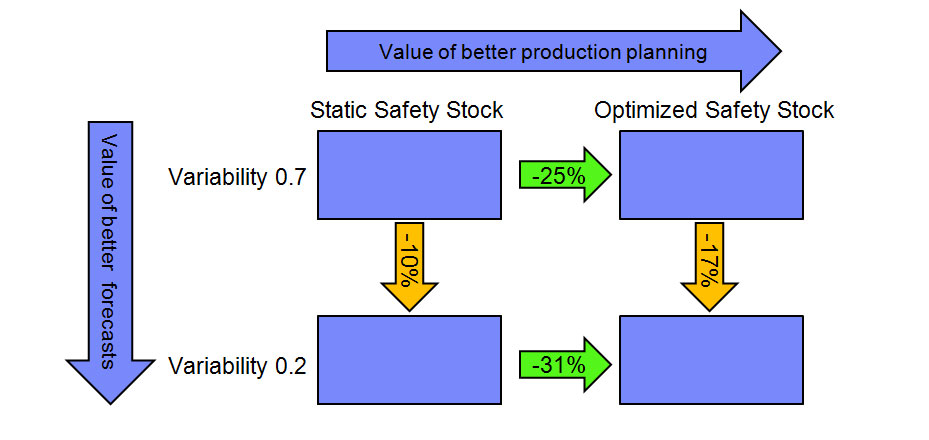SCDigest Says: |
 If the improved planning capability is first adopted, the reduction in forecast error now would actually generate a 17% further improvement in inventory reduction, versus the 10% from improving the forecast alone. If the improved planning capability is first adopted, the reduction in forecast error now would actually generate a 17% further improvement in inventory reduction, versus the 10% from improving the forecast alone.

Click Here to See Reader Feedback
|
The pressure to reduce inventories continues apace, even after the worst of the recession is well behind most companies.
Many companies look to improving their forecast accuracy as a key driver of inventory reduction, from the common sense view that better predicting what customers are going to buy will enable companies to better match planned inventories with actual demand.
But that might not always represent the lowest hanging inventory fruit for many manufacturers, according to Filippo Focacci, a product manager at IBM ILOG.
According to Focacci, there are three main areas in the supply chain that can have a significant impact on overall inventory levels:
- Forecast accuracy
- Where and at what levels inventory is positioned within a multi-echelon supply chain network
- Production planning and scheduling decisions
Speaking on a recent Videocast on the Supply Chain Television Channel, Focacci said that many companies think about factory planning and scheduling in terms of production costs, but often do not fully understand the significant impact manufacturing optimization can have on inventory levels as well - often a delivering greater reductions in inventory that might come from improving forecast accuracy can. (To view the full Videocast, go to: Agility in Consumer Goods Demand Driven Manufacturing.
For example, IBM recently worked with one consumer manufacturer to analyze this specific question. The results are shown in the chart below, which takes a little explaining.
The analysis considered two main variables: (1) improving forecast accuracy, measured in terms of reducing variability of forecast demand to actual demand; and (2) improving optimization of production planning and scheduling, including better optimization of safety stock levels in conjunction with the production schedule.
Impact on Inventory Levels from Forecast Improvement
versus Production Schedule and Safety Stock Optimization

Source: IBM ILOG
As can be seen, in this analysis substantially reducing forecast error variability from .7 to .2 would lead to a 10% reduction in total inventory levels.
(Supply Chain Trends and Issues Article - Continued Below)
|